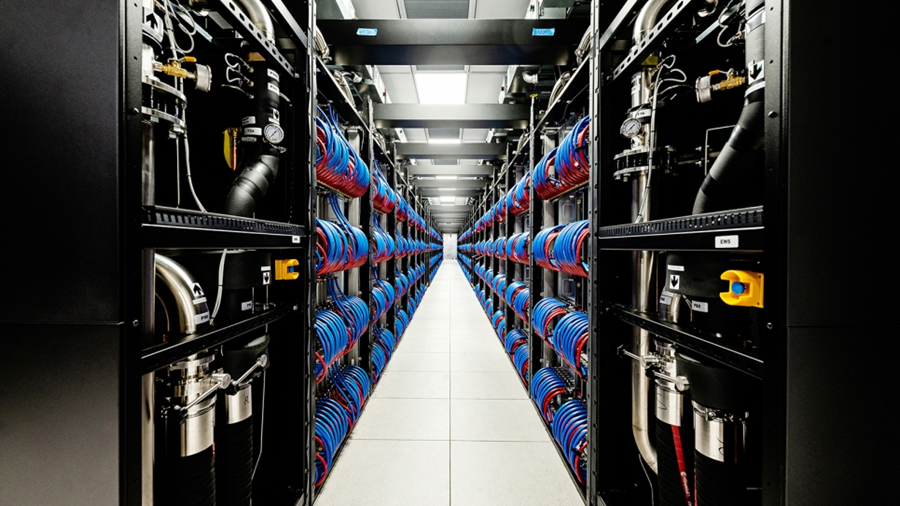Father
Professional
- Messages
- 2,602
- Reaction score
- 763
- Points
- 113
So far, no one has managed to overtake Frontier, but 2024 could change everything.
The Aurora supercomputer has officially reached an exaflop level of performance, taking second place in the Top500 ranking of the most powerful supercomputers. However, Aurora did not manage to surpass the leader-the Frontier supercomputer from Oak Ridge National Laboratory.
Once installed, Aurora, equipped with 21,248 Intel Xeon Max processors and 63,744 GPU Max accelerators, was expected to become the most powerful supercomputer in the world. However, the rating debut in 2023 showed that the system worked only at half of its capabilities, reaching 585 petaflops. Now operating at full capacity, Aurora has exceeded 1 exaflop of performance - 1,012 exaflops.

Aurora supercomputer
Meanwhile, the competition won't be long in coming. The El Capitan supercomputer from Livermore National Laboratory, which should debut in the Top500 ranking this fall, promises to become the new leader with a peak performance of 2.3 exaflops, ahead of Aurora by 400 petaflops.
Aurora also lags behind in energy efficiency, consuming 38.6 MW to reach exaflops, while Frontier costs 22.7 MW for 1.2 exaflops. It is worth noting that Frontier crossed the exaflops barrier back in 2022, reaching a capacity of 1.1 exaflops. However, ANL believes that the system has potential for improvement.
In the near future, several more powerful systems are expected to appear, including the first European exascale supercomputer Jupiter and new projects in the UK-Dawn and Isambard-AI, which also promise impressive performance indicators. Thus, the market for supercomputers remains very competitive, and the desire for exascale computing continues to gain momentum.
Recall that in May, SpiNNcloud announced the commercial launch of a hybrid high-performance computing system based on AI, developed on the architecture of Steve Furber, one of the creators of the original ARM processor. The new SpiNNaker2 system is based on the principles of the human brain and includes many low-power processors for efficient processing of artificial intelligence tasks.
The Aurora supercomputer has officially reached an exaflop level of performance, taking second place in the Top500 ranking of the most powerful supercomputers. However, Aurora did not manage to surpass the leader-the Frontier supercomputer from Oak Ridge National Laboratory.
Once installed, Aurora, equipped with 21,248 Intel Xeon Max processors and 63,744 GPU Max accelerators, was expected to become the most powerful supercomputer in the world. However, the rating debut in 2023 showed that the system worked only at half of its capabilities, reaching 585 petaflops. Now operating at full capacity, Aurora has exceeded 1 exaflop of performance - 1,012 exaflops.

Aurora supercomputer
Meanwhile, the competition won't be long in coming. The El Capitan supercomputer from Livermore National Laboratory, which should debut in the Top500 ranking this fall, promises to become the new leader with a peak performance of 2.3 exaflops, ahead of Aurora by 400 petaflops.
Aurora also lags behind in energy efficiency, consuming 38.6 MW to reach exaflops, while Frontier costs 22.7 MW for 1.2 exaflops. It is worth noting that Frontier crossed the exaflops barrier back in 2022, reaching a capacity of 1.1 exaflops. However, ANL believes that the system has potential for improvement.
In the near future, several more powerful systems are expected to appear, including the first European exascale supercomputer Jupiter and new projects in the UK-Dawn and Isambard-AI, which also promise impressive performance indicators. Thus, the market for supercomputers remains very competitive, and the desire for exascale computing continues to gain momentum.
Recall that in May, SpiNNcloud announced the commercial launch of a hybrid high-performance computing system based on AI, developed on the architecture of Steve Furber, one of the creators of the original ARM processor. The new SpiNNaker2 system is based on the principles of the human brain and includes many low-power processors for efficient processing of artificial intelligence tasks.

